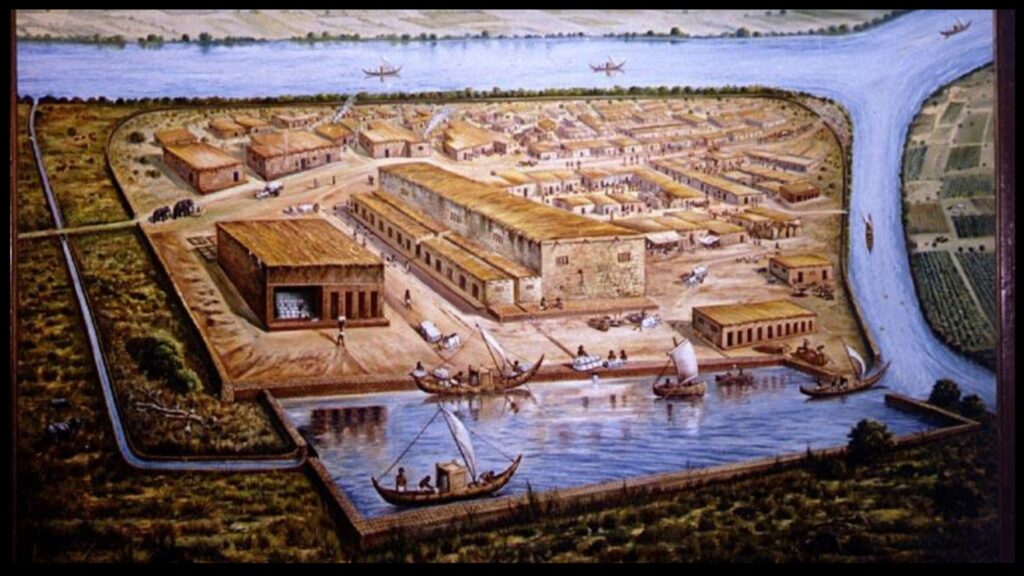Introduction
We’ve come a long way as a species. From rubbing stones to sending satellites. From walking on four to building cities with perfect drainage systems. And it all started with one thing — curiosity.
That same curiosity takes us back in time. Digging into history to learn about the old civilisations and understand how they built things that were ahead of their time.
We all studied the Indus Valley and Harappan civilisation in school, but very few have visited and experienced it in reality. One such place is Lothal, situated in the Bhal region. Once, it thrived with trade and ships, today it stands quiet — a bare stretch of land holding signs of a civilisation that once led the way.
If you’re planning a trip to Lothal, this blog is a brief for you. Because once you’re there, standing near that ancient dockyard, the silence will say more than any textbook ever could.
Lothal’s Timeline – A Quick History

Lothal was part of the Harappan Civilisation — one of the oldest and most advanced civilisations known to us. Between 2400 BCE and 1600 BCE, this place thrived with trade, craftsmanship, and city planning.
The name Lothal comes from two Gujarati words — “Loth”, meaning dead, and “thal”, meaning land. Together, it loosely translates to “the land of the dead.”
The site was discovered in 1953 by SR.Rao, an Indian archaeologist. Lothal was known for its dockyard, one of the earliest known to mankind. A unique structure back then, it connected trade routes through the Bhogavo river, a tributary of the Sabarmati.
Imagine this — you’re standing where ships came and left, 4000 years ago. No concrete. No machines. Just smart design and a deep understanding of water, trade, and time.
Inside the City: Citadel, Town, & Market

Lothal wasn’t just another old ruin. It was a city with structure, logic, and well-planned, with a level of detail that still impresses.
The city was divided into two main parts. The Citadel, or Upper Town, stood on raised ground. Situated in the southeastern part of Lothal, this area housed the important people, giving social separation. Surrounded by a 4m mud-brick wall, these sturdier buildings were built and placed higher, safe from floods.
Below, the Lower Town was situated in the north and west of the citadel. Rows of houses follow the strict grid patterns. Traders and artisans here make beads, pottery, and tools that would travel across regions. What stood out the most was its advanced drainage system, well-planned and milestone for an ancient time.
The Dockyard That Defied Time

Lothal’s dockyard isn’t just a pile of bricks — it’s an engineering statement from 4000 years ago. Measuring roughly 200 meters long and 35 meters wide, this structure is believed to be one of the world’s earliest known dockyards.
The location connected inland trade to the Gulf of Khambhat, turning Lothal into a major maritime hub. Ships from distant regions likely docked here, loaded with beads, gems, ivory, and shells.
What makes it even more fascinating is how well-engineered it was. The dockyard has an inlet and outlet channel for the water flow. Standing beside it, you don’t just see the past. You see precision, foresight, and a civilisation that knew exactly what it was doing.
How to Visit Lothal?
Lothal is about 80 km from Ahmedabad, making it a solid half-day trip if you plan it right.
By Car: This is your smoothest option. The drive via Dholka is straightforward, and you can explore nearby spots too if time allows.
By Train: The nearest station is Bhurkhi. From there, catch a local tuk-tuk — it’s a bumpy but fun ride to the site.
By Bus: It will take around 2-3 hours by bus. Take a bus from Ahmedabad and get off at Arnej. Grab a tuk-tuk to reach the location.
A day is enough for Lothal. After covering the main sight, make sure to visit the museum. It holds excavated artefacts — beads, tools, and pottery — providing a deeper insight into Lothal’s past beyond the bricks.
Conclusion
Lothal is not a place for everyone. But when you realise that it was older than the epics Ramayan or Mahabharata, it makes you pause. As for now, it’s just the ruins holding centuries of history and innovation. The place is not very special, but for a person who loves history, Lothal is more than worth the detour.
Loved this Blog? Then we have more for you, including travel, food, and startups. Follow Gujpreneur for more such amazing content.








Comments
Hey we will surely try to cover that.
Great post! I'm curious, do we know how the dockyard at Lothal compares in size and function to other ancient docks from the same period elsewhere in the world? Would love to hear more about that aspect.